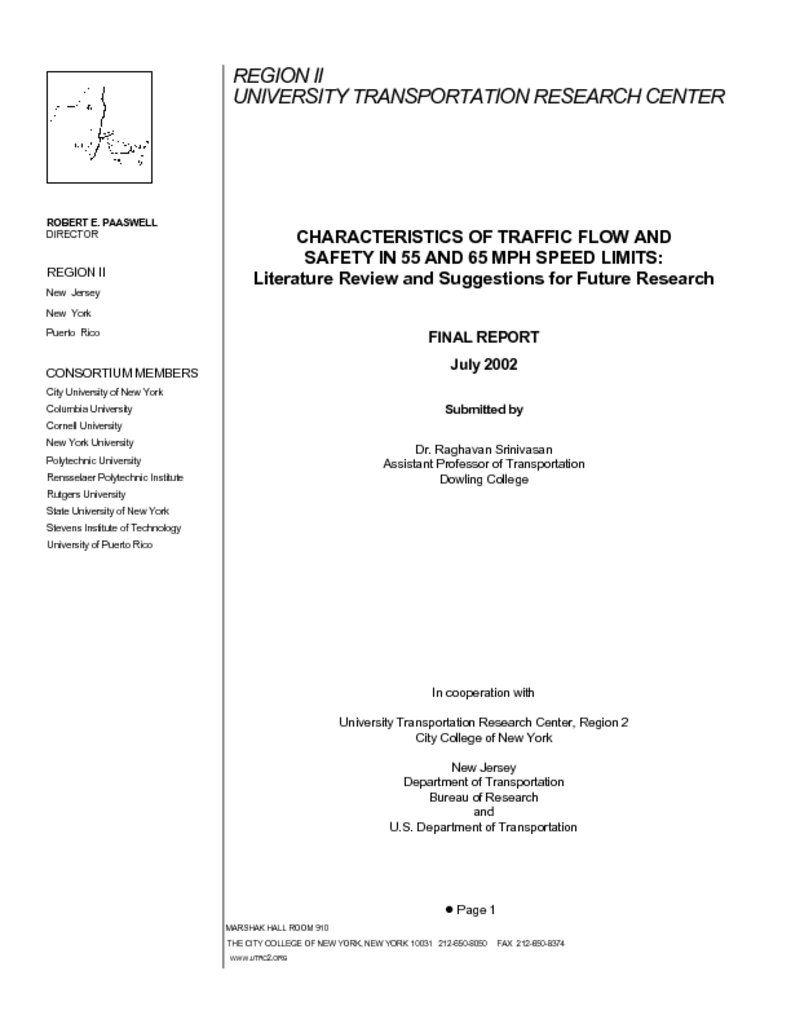Speed limits have been introduced for many reasons, e.g., to reduce gas consumption, to reduce the frequency and severity
of crashes, and in some cases to reduce noise. The objective of this research effort was to conduct a literature review to
assess the effect of increased speed limits on limited access roads regarding safety, travel speeds, and other unanticipated
impacts including shifts in lane distribution, traffic diversions, and spillover effects. Following are the conclusions:
? In general, an increase in the speed limit does lead to an increase in average speeds, although the magnitude of this
increase is less than the increase in the speed limit.
? Speed is directly related to the severity of crash injury. Probability of severe injury increases sharply with the
increase in the impact speed of a vehicle.
? Studies that have tried to assess the impact of speed limit changes on speed dispersion have not produced consistent
results.
? There seems to be a relationship between speed dispersion and safety. The safety effect of speed dispersion
appears to most important for the fastest rather than the slowest drivers.
? Very little is known about the effect of changes in the speed limit on spillover and diversion of traffic to high-speed
roads. Some of these issues will be addressed in an on-going NCHRP project that is expected to be completed in
summer of 2004 (NCHRP Project 17-23).
? Further research is needed to develop appropriate methodologies that can be used to study the impact of changes in
speed limits including the selection of appropriate statistical models.
Publication Category


